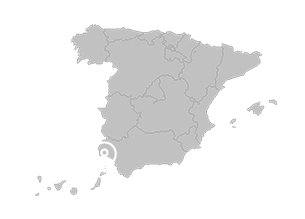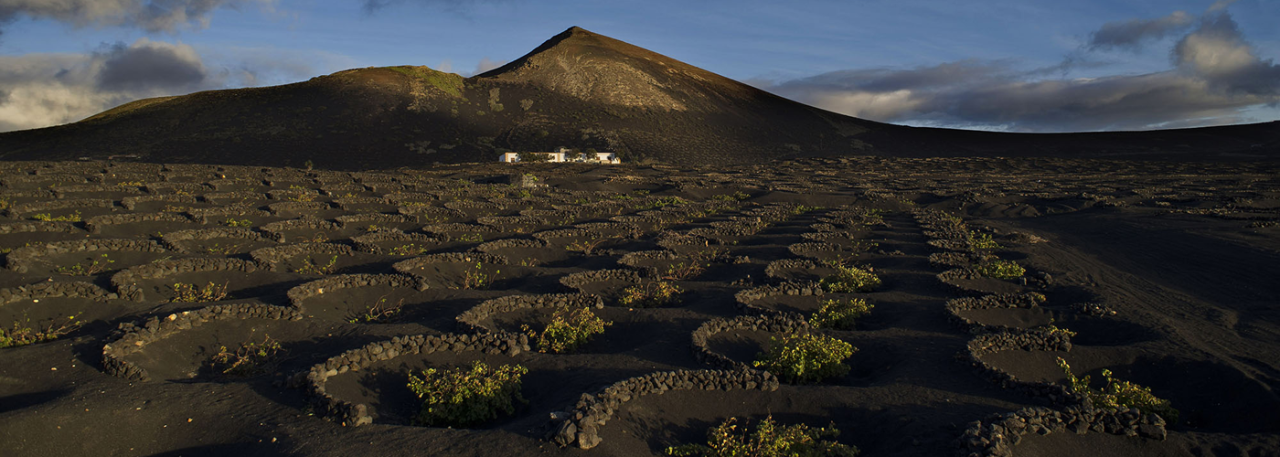Max. Summer temp. : 24 ºC
Min. Winter temp.: 16ºC
Average rainfall: 100 mm annually
Average sunshine: 2,925 hours annually
.png.transform/rendition-xs/image_image%20(1).png)

San Bartolomé-Lanzarote (Canary Islands)
Max. Summer temp. : 24 ºC
Min. Winter temp.: 16ºC
Average rainfall: 100 mm annually
Average sunshine: 2,925 hours annually
Lanzarote, the Canaries' most easterly island, boasts some of Spain's most distinctive and spectacular landscape.
Over the centre of the island spreads a vast expanse of black solidified lava. No weeds or vegetation can grow there, but the outer edges of the lava field provide a unique vineyard terroir rich in volcanic ash called lapilli where vines are planted in hollows (hoyos) or trenches (zanjas ).
Their roots reach underneath the ash to the soil below. Each hollow is surrounded by a cairn (abrigo) to protect it from the prevailing Saharan winds. Malvasía is planted in more than three-quarters of the vineyards.
Regulatory Council
Consejo Regulador DO Lanzarote
Arrecife, 9
San Bartolomé-Lanzarote
Las Palmas
Tel.: +34 928 521 048 / +34 928 521 313
info@dolanzarote.com
dolanzarote.com
Sources:
- Spanish Ministry of Agriculture
Modern winemaking techniques will help the DO's winemakers achieve new quality levels in coming years.

